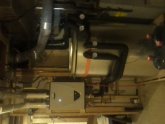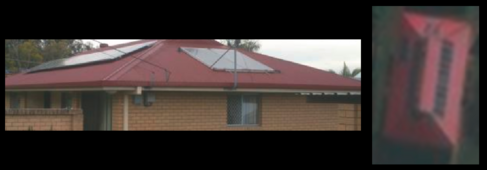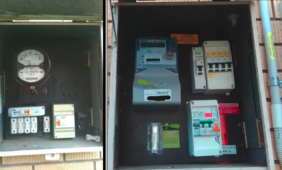tallslenderguy
New Member
- Joined
- Jan 20, 2020
- Messages
- 5
i did a quick search on this and didn't get any results, so apologies if this is a redundant question. i've been wanting to install a vacuum tube water heater on my suburban dwelling for a few years now and am ready to dive in. i'm pretty handy, restored 4 historical houses, installed a mini split system a year and a half ago and it's functioning nicely. i really like the efficiency of vacuum tube set ups and will probably get a ready made unit that's SRCC certified and take advantage of the 26% federal tax credit vs making my own. Looking for input and advice from anyone who is savvy or has done this. i really like the vacuum tube systems for their angle efficiency.
i live alone, so my hot water needs aren't high. I currently have a 50g electric hot water heater. I replaced the elements and one thermostat a couple of weeks ago (4500w x 2). The HW heater is in my garage and the roof right over it is very easily accessed from my back deck (pics attached). The roof is at a 10/12 angle (looks like?) and faces 240 degrees SW. i suppose i could angle/side mount the collector to face true south, but am wondering how necessary that is vs the ease and stability of just mounting perpendicular to the roof line? So placement input?
Second question is tank attached to collector or tankless? i'm a little surprised i'm not finding more collector choices in my search... but right now looking at Duda and Sunbank. The Duda is just a collector, the Sunbank has a 40gal tank attached and is double the cost. But that's not really apples to apples comparison, because the Duda has double the collectors at $1250 and 30 tubes vs the Sunbank having 15 collectors at $2500. Almost seems like a no brainer to go with the former? i cannot see any advantage of having the connected tank as they configure it to bypass their tank if you have an existing, otherwise double capacity would be an advantage? Also, having the added weight of a 40 gal tank on my roof might require shoring up the roof.
Sizing. Is 30 tubes overkill? The cost difference between the 20 and 30 tube Duda seems negligible to me in the long run. I live in the Willamette Valley in OR. Half the year its cloudy, the other half it isn't. I'd rather go with thirty tubes if i could just roof mount without getting creative about angles.
Any other sage input would be appreciated. i like to work a project over in my mind before undertaking it, seems to make the speed bumps more manageable once into the project.
thanks
i live alone, so my hot water needs aren't high. I currently have a 50g electric hot water heater. I replaced the elements and one thermostat a couple of weeks ago (4500w x 2). The HW heater is in my garage and the roof right over it is very easily accessed from my back deck (pics attached). The roof is at a 10/12 angle (looks like?) and faces 240 degrees SW. i suppose i could angle/side mount the collector to face true south, but am wondering how necessary that is vs the ease and stability of just mounting perpendicular to the roof line? So placement input?
Second question is tank attached to collector or tankless? i'm a little surprised i'm not finding more collector choices in my search... but right now looking at Duda and Sunbank. The Duda is just a collector, the Sunbank has a 40gal tank attached and is double the cost. But that's not really apples to apples comparison, because the Duda has double the collectors at $1250 and 30 tubes vs the Sunbank having 15 collectors at $2500. Almost seems like a no brainer to go with the former? i cannot see any advantage of having the connected tank as they configure it to bypass their tank if you have an existing, otherwise double capacity would be an advantage? Also, having the added weight of a 40 gal tank on my roof might require shoring up the roof.
Sizing. Is 30 tubes overkill? The cost difference between the 20 and 30 tube Duda seems negligible to me in the long run. I live in the Willamette Valley in OR. Half the year its cloudy, the other half it isn't. I'd rather go with thirty tubes if i could just roof mount without getting creative about angles.
Any other sage input would be appreciated. i like to work a project over in my mind before undertaking it, seems to make the speed bumps more manageable once into the project.
thanks










